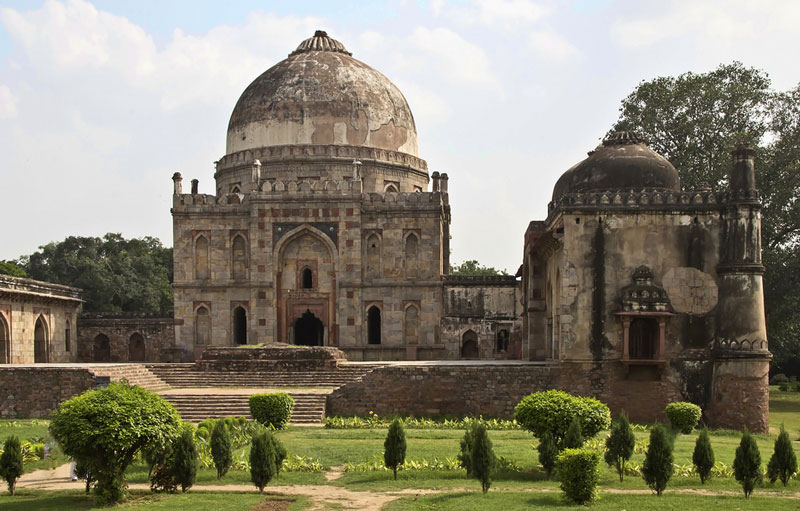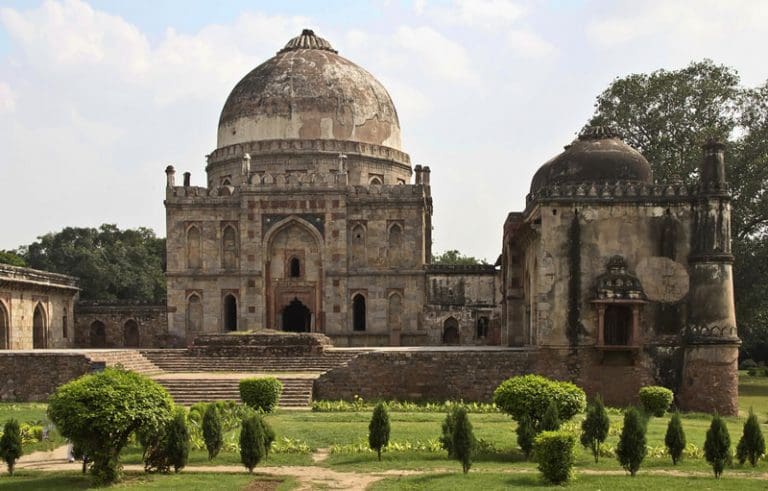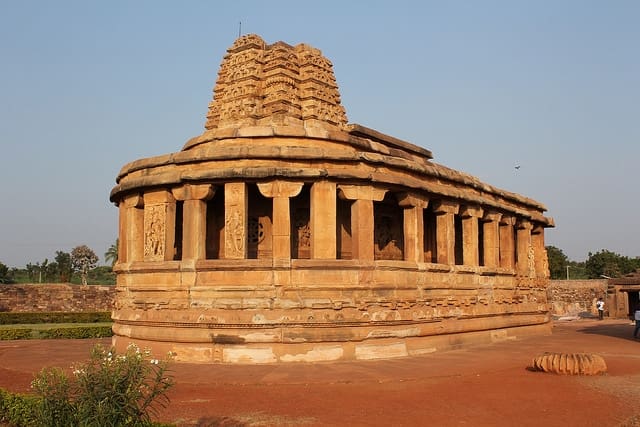Nestled in the heart of Delhi, Lodhi Garden is more than just a green oasis; it’s a living testament to the rich history and vibrant culture of the city. Spread over 90 acres, this historical park holds within its boundaries a tapestry of architectural marvels, natural beauty, and cultural significance that beckons visitors from all walks of life.
Historical Background
Dating back to the 15th century during the reign of the Lodhi dynasty, Lodhi Garden‘s origins are intertwined with Delhi’s historical narrative. Originally known as Lady Willingdon Park, the garden was later renamed in honor of the Lodhi rulers, who played a pivotal role in shaping the city’s history. The park houses significant structures, including the Bara Gumbad, Shish Gumbad, and Mohammed Shah’s Tomb, each narrating stories of an era long gone.
Architectural Marvels
Bara Gumbad and Shish Gumbad
The Bara Gumbad, a grand domed tomb, stands as a masterpiece of architecture, reflecting the grandeur of the Lodhi period. Its imposing structure is complemented by intricate detailing, showcasing the craftsmanship of that era. Adjacent to it, the Shish Gumbad, adorned with glazed tiles that shimmer in the sunlight, adds a touch of elegance to the landscape.
Mohammed Shah‘s Tomb
The tomb of Mohammed Shah, the last ruler of the Sayyid dynasty, is an architectural gem within Lodhi Garden. Its octagonal design, intricate carvings, and detailed calligraphy on the walls make it a captivating destination for history enthusiasts and architecture aficionados alike.
Natural Beauty and Landscape
Lodhi Garden isn’t merely a historical site; it’s a haven of tranquility where nature’s beauty unfolds in diverse forms. As visitors meander through the garden’s pathways, they encounter a symphony of colors and scents from the carefully curated collection of flowering plants. The presence of water bodies further enhances the landscape, creating a serene ambiance that captivates the senses.
Recreational Activities
odhi Garden offers a spectrum of recreational activities, making it a favorite among fitness enthusiasts and families alike. The well-maintained jogging and walking trails provide a scenic route for morning and evening exercise. The garden also hosts yoga sessions, attracting participants seeking a peaceful outdoor environment for their practice. Families often flock to Lodhi Garden for picnics, utilizing designated areas to enjoy quality time surrounded by nature.
Cultural Events and Festivals
Beyond its historical and natural allure, Lodhi Garden serves as a cultural hub, hosting various events throughout the year. Art exhibitions and installations breathe life into the serene surroundings, transforming the garden into an open-air gallery. Music and dance performances add a melodic touch, creating an atmosphere of celebration. Additionally, the garden becomes a festive venue during cultural events, fostering a sense of unity among visitors.
Photography Paradise
Lodhi Garden’s captivating beauty extends to its popularity among photographers. The interplay of light and shadow, combined with the architectural splendor, creates a perfect canvas for photography enthusiasts. Sunrise and sunset are particularly enchanting times to capture the garden’s essence. Iconic spots, such as the reflective pool near Bara Gumbad, offer picturesque backdrops for memorable shots.
Local Wildlife
While exploring Lodhi Garden, visitors may encounter more than just historical monuments and lush landscapes. The garden is home to a diverse array of wildlife, including birds, butterflies, and insects. The coexistence of nature within an urban setting highlights the importance of preserving green spaces for ecological balance. Lodhi Garden stands not only as a historical monument but also as a sanctuary for local flora and fauna.
Visiting Tips and Guidelines
To make the most of your visit to Lodhi Garden, consider the following tips and guidelines:
- Ideal Times to Visit: Early mornings and late evenings provide a tranquil experience with milder temperatures and softer lighting.
- Conservation: Help maintain the garden’s pristine condition by adhering to the rules, such as avoiding plucking flowers and littering.
- Recreational Facilities: Take advantage of the jogging tracks, yoga areas, and designated picnic spots for a fulfilling visit.
- Guided Exploration: While official guided tours may be limited, hiring a local guide can enhance your understanding of the garden’s history and features.
Community Engagement
Lodhi Garden’s beauty is not just a product of nature and history; it thrives due to the active involvement of local communities. Residents and volunteers actively contribute to the maintenance and enhancement of the garden. Community-driven initiatives, such as tree planting drives and cleanliness campaigns, underscore the importance of collective responsibility in preserving this cultural and ecological gem.
Lodhi Garden and Health
The connection between Lodhi Garden and well-being goes beyond its aesthetic appeal. The serene environment provides a retreat for mental health, offering a break from the hustle and bustle of city life. Many visitors use the garden as a space for meditation and mindfulness, finding solace amidst the greenery and historical resonance.
Nearby Attractions
Lodhi Garden’s strategic location makes it a hub for explorers seeking more than one destination in a single trip. In close proximity, visitors can discover other historical landmarks, such as Humayun’s Tomb and Safdarjung’s Tomb. These architectural marvels complement the experience of Lodhi Garden, providing a comprehensive glimpse into Delhi’s rich history.
Preservation Efforts
The preservation of Lodhi Garden is a collective effort that involves various stakeholders, including local communities, environmentalists, and government bodies. Ongoing initiatives focus on maintaining the historical integrity of structures, sustaining the natural ecosystem, and implementing measures to ensure the garden remains a sustainable and well-preserved public space. Regular maintenance activities, tree planting drives, and awareness campaigns contribute to the garden’s long-term preservation.
Future Developments
While Lodhi Garden stands as a testament to Delhi’s history, there are ongoing discussions about potential developments to enhance the visitor experience. Proposed improvements include the integration of technology for guided virtual tours, enhanced recreational facilities, and the introduction of educational programs to foster a deeper understanding of the garden’s cultural and ecological significance. Community input remains crucial in shaping the future of Lodhi Garden.
Conclusion
In conclusion, Lodhi Garden is not merely a destination but a living entity that evolves with time. Its historical roots, coupled with natural beauty and community engagement, create a dynamic space that caters to diverse interests. Whether you are a history enthusiast, nature lover, or someone seeking a tranquil retreat, Lodhi Garden welcomes you to be part of its legacy. As you explore the garden’s architectural wonders, participate in cultural events, and contribute to its preservation, you become an integral part of the ongoing narrative that defines Lodhi Garden.
FAQs
- Is Lodhi Garden open to the public every day?
- Yes, Lodhi Garden is open to the public every day from sunrise to sunset.
- Are there any entry fees for visiting Lodhi Garden?
- No, entry to Lodhi Garden is free for all visitors.
- Can visitors bring food and have a picnic in the garden?
- Yes, visitors are allowed to bring food and have picnics, but they are encouraged to maintain cleanliness.
- Are there guided tours available for exploring Lodhi Garden?
- While there are no official guided tours, visitors can hire local guides for a more in-depth exploration.
- Is Lodhi Garden wheelchair accessible?
- Yes, Lodhi Garden is wheelchair accessible, ensuring that everyone can enjoy its beauty.













